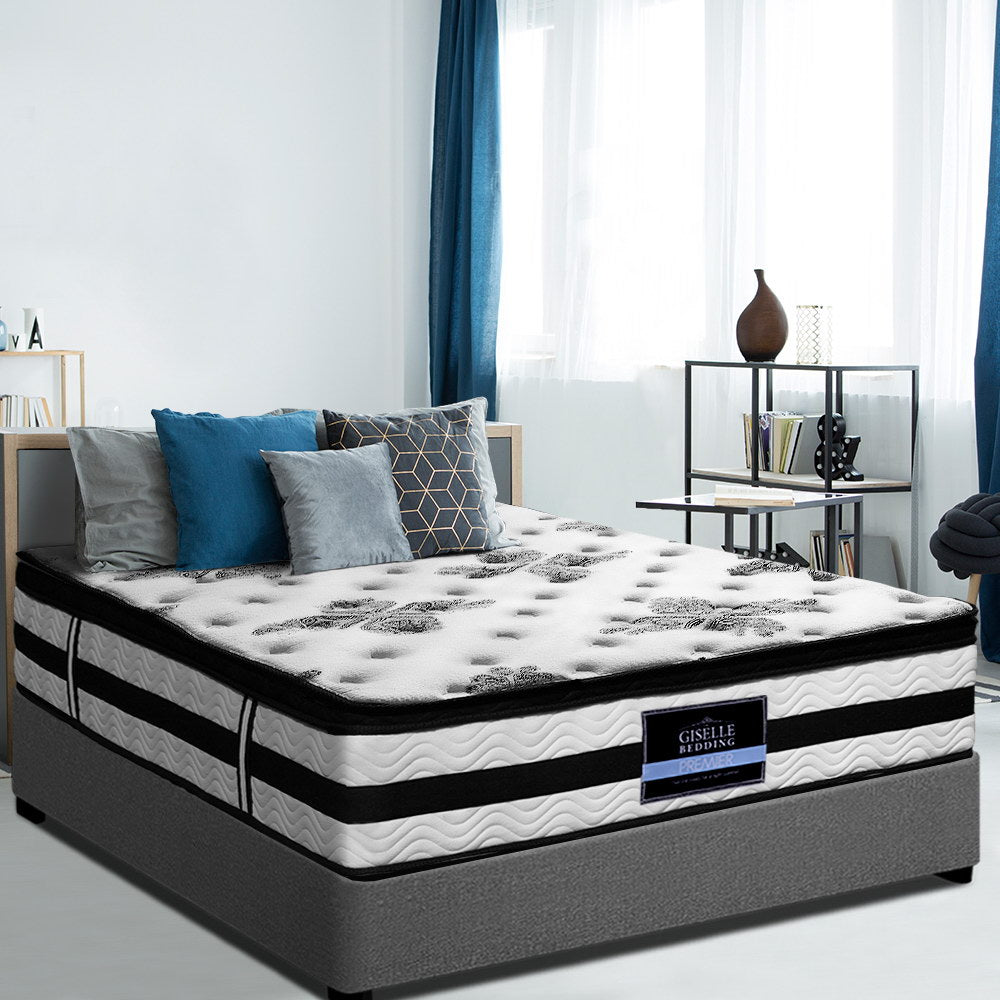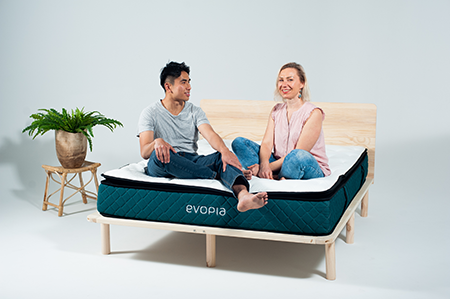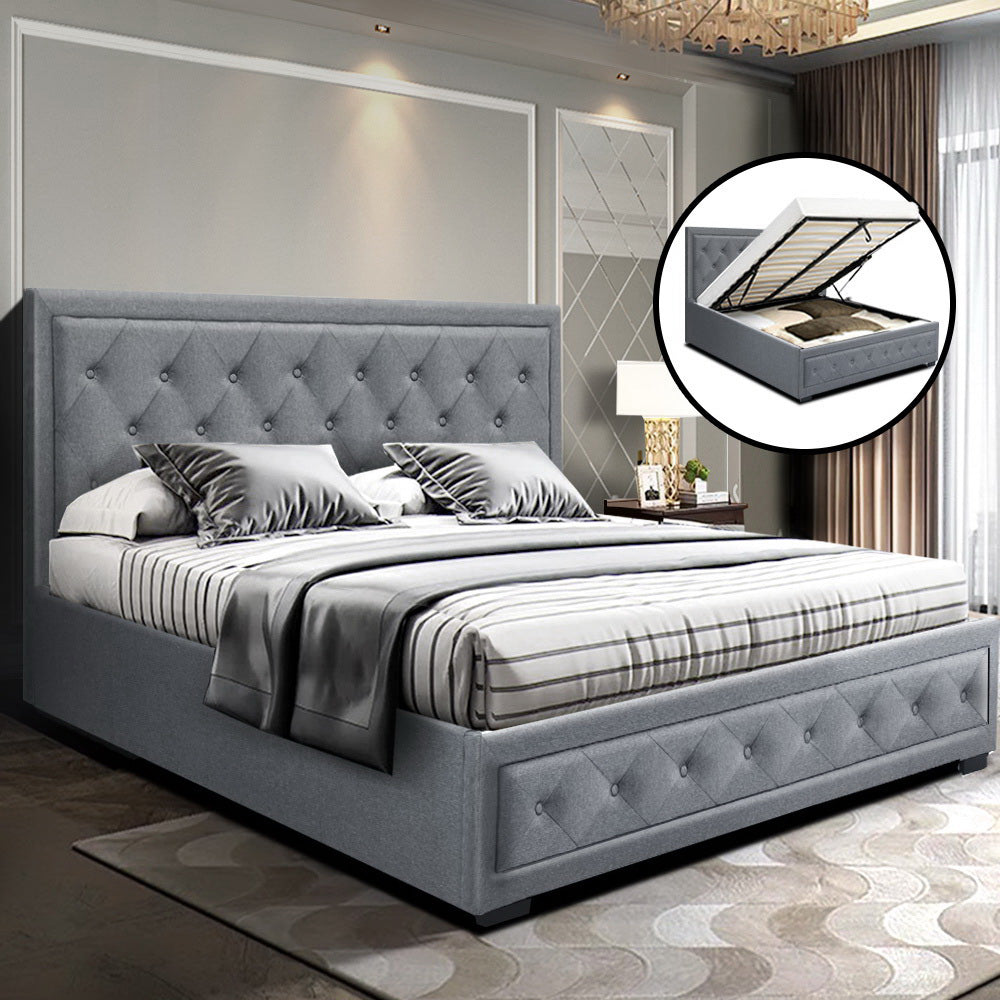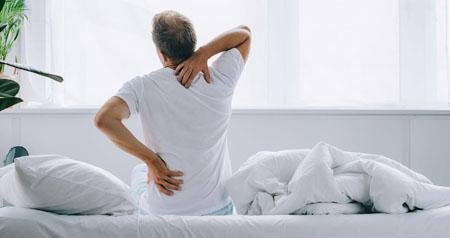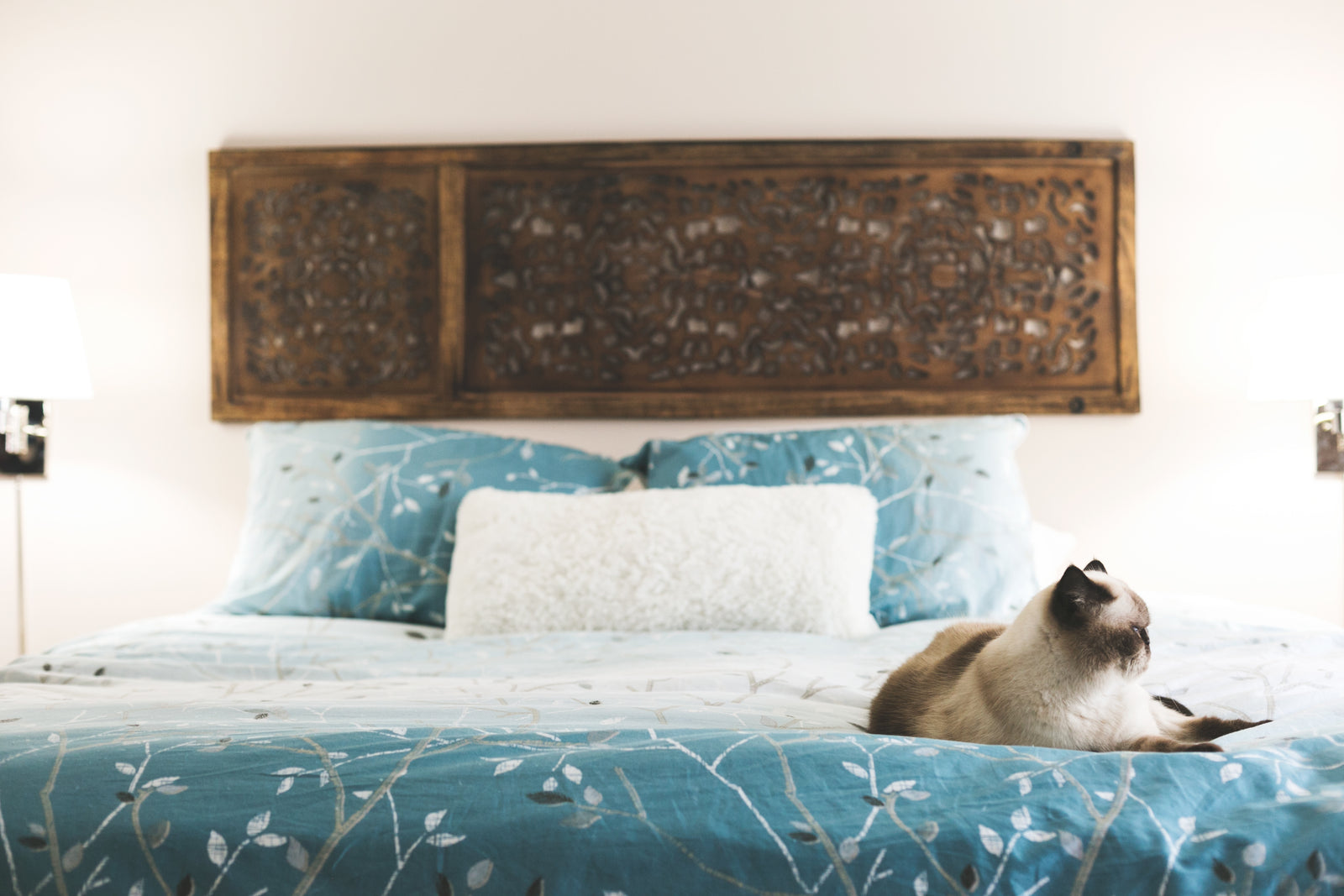Choosing a Mattress for lower back pain
Our modern lifestyles have changed the way we live with less physical activity and more occupations than ever involving less physically demanding tasks or sitting at a desk in an office.
We spend on average 7-8 hours a day or almost a third of our lives in bed which is a chance for our bodies to rejuvenate ready for the next day. We then spend a up to a third of our day in an office chairor vehicle seat which puts pressure on our back and skeletal/muscular system.
Finding ergonomically sound solutions to sleeping and sitting can make a huge difference to back pain and comfort.
One of the most common questions we get asked is which Mattress is good for lower back pain. There is of course no simple answer to this and it depends upon many factors. In this article we cover some considerations which can assist you in making a decision, based on your specific needs.
The old saying that a firm Mattress is good for your back is no longer considered good advice. Its about the right support and level of firmness for your bodyweight and style of sleeping.
Note: If you have chronic back pain you should speak to a medical professional. The following are general guidelines only to choosing a mattress to help avoid developing or aggravating back pain. If your pain persists, seek medical advice.
How old is your current Mattress
If you sleep on your Mattress for 11 months of the year, you will have slept on your Mattress for between 2,000 and 2,500 hours in a 12 month period. Over time, the weight on the springs and foam leads to some degree of sagging and compression resulting in the Mattress not providing the support it used to. Its important to rotate the Mattress every few months so that the wear is even and uniform. If your Mattress is sagging on the side or in the middle, you may not be keeping your spine aligned and you may have pressure points developing around your hips or shoulder. This can contribute to back pain or can aggravate existing muscle pain in the lower back.
If you are waking up with pain or discomfort in the lower back, it may be time to replace your Mattress. Most mattresses should be replaced every 8 years on average.
Understanding what can cause or aggravate back pain in bed
One of the keys to managing back pain is maintaining the alignment of the spine during sleep. Your spine has three curves:
1. The C shaped Cervical spine which supports the head
2. The reverse C shaped Thoracic spine that holds the upper body
3. The C shaped Lumbar spine that is the foundation of your back

When sleeping on your side the spine should be straight from the Lumbar all the way through to the neck. If the Mattress is too soft the hips are too low, curving the spine downwards and if too hard, the hips sit too high causing a curve like an S. Both of these positions will contribute to back pain.

When sleeping on your back or tummy its important that the spine is kept close to its natural position with the body supported correctly.
Last but not least, having the correct pillow to keep the neck in alignment with the spine will help avoid or aggravate neck pain.
The key is a Mattress that is not too soft or too hard. that minimises stress on the cervical, thoracic and lumbar spine.
Choosing the right level of firmness in a Mattress
For a back sleeper you need to choose a mattress that is firm enough to support your lower back while soft enough to contour to your body. A Mattress that is too firm will push against your spine while one that is too soft will not offer enough support.
A side sleeper needs a softer mattress to contour to the body and cushion the shoulder and hips while keeping their spine in alignment.
Often someone with lower back pain will sleep on their tummy and will need a firmer Mattress to keep them afloat and not sinking in too far.
The general guidelines quoted for softness through to firmness are good for someone of average bodyweight between 60 and 100kg. However someone with a lower bodyweight will need a softer Mattress wheras someone of a higher bodyweight will need a firmer mattress.
Body weight Ideal firmness range
|
Body weight |
Ideal firmness range |
|
|
<60kg |
Medium Soft 5.0 |
People under 60kg will not be comfortable on a firm mattress as they will not sink in to align their spine |
|
30kg – 100kg |
Medium 5.5-6.0 |
People between 60 and 100kg prefer a medium Mattress, not too soft or too firm |
|
100kg-120kg |
Firm 6.0-6.5 Ultra-Firm 7.0-9.0 |
People over 100kg will sink too far on a soft Mattress so a firm Mattress is a good choice |
What is right for one person may be too soft or firm for another person, so there is not a simple answer to this question. But taking these guidelines into consideration will help you make the best choice for you.
In the opinion Jeffrey N Katz M.D., Professor of Medicine and Orthopedic Surgery at Harvard Medical School, and one of the most authoritative voices in the back pain field, changing your mattress can make a substantial difference:
On the report of one study conducted on 313 patients suffering from lower back pain, those using medium-firm mattresses reported less pain when lying in bed as well as less pain-related disability compared with those using firm mattresses.
This finding, which has been confirmed several times by other doctors, is an eye opener as it’s in stark contrast with the old-school recommendation to use a very firm mattress.
Dr. Katz goes on, recommending consumers try different mattresses and see which one feels best.
What types of Mattress construction is good for back pain?
There are many types of Mattresses on the market that offer different features and benefits. In broad terms there are innerspring constructions that have a spring support base with layers of foam or latex to create different levels of firmness and comfort. Then there are foam mattressesthat are made with different grades of high density foam to achieve a range of firmness levels. Memory foam in a Foam or Innerspring mattress can be good at moulding to the body to give even support for sufferers of back pain. Some people love memory foam while others don’t like the feel, so it’s a very personal choice.
A Hybrid innerspring and foam Mattress is a good combination of the benefits of an innerspring core and the use of high density or memory foam to achieve different levels of firmness. The innerspring core is good for air flow and
ventilation and has the strength for heavier people. By combining with a Pillow-
top foam layer a softer mattress is created for side sleepers and lower body
weights. A Euro-top mattress is a firmer version with stronger edges and firmness for all sleeping styles and heavier bodyweights. The tight-top is a stronger more robust
structure ideal for tummy sleepers and higher bodyweights.
A Bonnell spring is the traditional construction of a mattress with a series of coils laced together. They are strong, durable and great in Tight-top mattresses for higher bodyweights. A Pocket spring is where each coil is independent and sew into its own pocket. This minimises partner disturbance from movement and is great at moulding to the body to provide even support for sufferers of back pain.
A pocket spring highbred with a Euro-top is the most common choice for a side sleeper.
Choosing a Mattress
Trying a Mattress in store is usually not enough time to evaluate whether a
Mattress is going to be right. A quick lie on a mattress in store for a few minutes and a mattress may feel suitable, only to find it too soft or firm after sleeping on
it for a few days or weeks.
Some Retailers offer sleep trials which are a great way to test a Mattress and return it if it is not suitable. However, the returned Mattresses cannot be re-sold and the cost of these returns is built into the price you pay.
There are many options on-line which can bring significant savings in price. If you evaluate what you require from a Mattress based on your sleeping style and bodyweight, you can buy a great quality Mattress at a very reasonable price, often including delivery.
Adjustable Beds for back pain
Many sufferers of back pain find adjustable beds good where the sleeping anglecan be adjusted for comfort and changed when discomfort occurs. Some back
sleepers like support under the knees for example.
One way to test this or get some relief for a back sleeper is with a wedge pillow
under your upper back to sleep in an inclined position.

For a side sleeper a pillow between the knees can straighten the spine leading to better alignment.
If you suffer from back pain, these techniques may provide you with some relief.
Improving an older bed that is too hard/soft
An affordable way to add softness or firmness to a bed is to add a Mattress Topper. These are available in high density foam and memory foam and can be as thick as 5cm or 8cm. This can be a quick and affordable way to improve back pain issues without having to change a Mattress or to experiment before choosing what type of Mattress to buy.
A Topper with gel infused memory foam can add a cushion to your Mattress that contours to your body reducing pressure points.
Choosing the right Pillow
Once you have addressed your Mattress, don’t forget to make sure you have a
pillow that supports your head and neck correctly.
For a side sleeper, a pillow should keep the spine in a straight line by being thick and supportive enough to hold the head while not elevating it above the spine.
A contour pillow can be good as it supports the neck.

Placing a firm pillow between your knees can help a side sleeper with lower back pain by rotating the hips back to the straight position.
Feather and down filled pillows can be good for a back sleeper where the head needs to be lower.
Buying a set of pillows of different firmness can be a good option so you can experiment or change around if you are a combination sleeper who changes position through the night.




